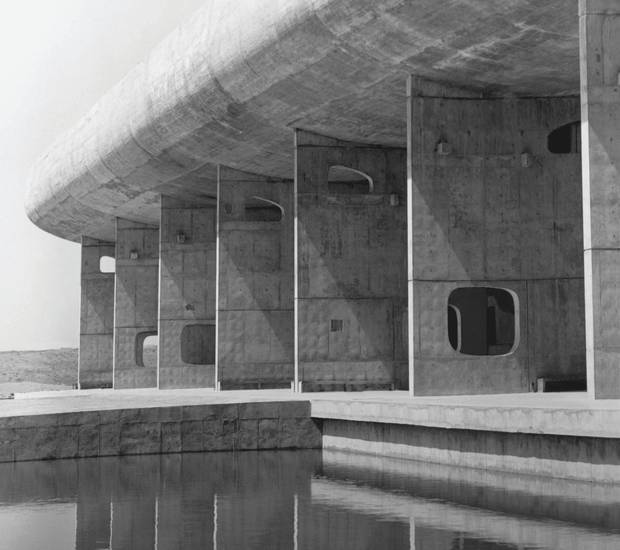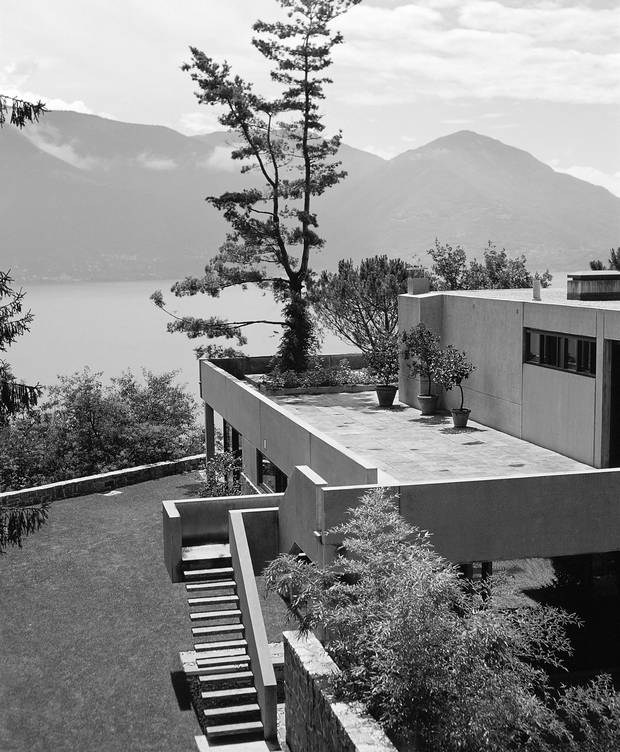In March, an architectural icon changed hands. When the Whitney Museum of American Art took occupancy of its new, Renzo Piano-designed home in New York's Meatpacking District in May 2015, the Metropolitan Museum of Art claimed its original Madison Avenue address for its own modern and contemporary collections. Rechristened the Met Breuer after its architect – Hungarian-born, Bauhaus-trained, New York-transplant Marcel Breuer – the institutional switch and subsequent careful restoration by the firm Beyer Blinder Belle, has sparked renewed interest in both its designer and the building's somewhat depressingly-named architectural style, brutalism.
Though Breuer did not identify with the aesthetic, characterized by a hulking, sometimes intimidating monumentality, the skillful use of concrete in his structures signalled a shift away from the all-glass facades made popular by the International Style of the 1950s and '60s. So it might not be surprising that a similar transition is happening today, as a new generation of architects tries to differentiate its buildings from the glut of transparent condominium and office towers that have come to dominate city skylines around the world.

FONDATION LE CORBUSIER/DACS
Indeed, many contemporary architects are adapting and updating some of brutalism's core ideas. Think Bjarke Ingel's take on Moshe Safdie's Habitat 67 for a new condo complex on King Street West in Toronto, the Quinta Monroy housing project in Iquique, Chile by Pritzker Architecture Prize winner Alejandro Aravena of Elemental, the faceted Spring Street Salt Shed for the New York City Department of Sanitation by Dattner Architects, or David Adjaye's use of patterned concrete for the Sugar Hill Development in Harlem. "No other material has the potential of such complete and convincing fusion between structure, enclosure and surface," said Breuer in 1963.
In the new Phaidon book, Breuer, out later this month, author Robert McCarter explores the architect's major projects and the experience of inhabiting his spaces. The Whitney was Breuer's only built work in Manhattan, a masterpiece of granite cladding, boardformed concrete walls and bush-hammered textural details. Concrete, when applied in an exposed, unfinished state called béton brut, is the material most often associated with the "new brutalism" style, named by architectural critic Reyner Banham. Its major proponents, including heavy-hitters Alison and Peter Smithson and Le Corbusier – whose Unité d'Habitation in Marseilles, France, remains the de facto reference for all things brutalist – exploited the material's raw honesty.
The movement had a social dimension as well, which Banham probed in his 1966 publication, The New Brutalism: Ethic or Aesthetic?, released the same year the Whitney opened. At the time, many cities (including Toronto, Montreal and Winnipeg) were undergoing accelerated growth and were flush with cash for projects like the University of Toronto Scarborough Campus, Place Bonaventure and Winnipeg's Public Safety Building. Brutalism was the bold and visionary answer to the question: What building style is most appropriate (or sufficiently morally serious) for civic architecture?

MARCEL BREUER AND ASSOCIATES/BETTMAN/CORBIS
Concrete, plentiful and accessible, became linked to the very concept of democracy, applicable to both institutional buildings and social housing. The material was "expressive, monumental and got at a civic aspiration," says Chris Grimley, a Boston architect and the author of Heroic: Concrete Architecture and the New Boston. But it wasn't always so. Before concrete became the material of choice for city halls and libraries, it was mostly reserved for industrial sites like granaries and chimney stacks.
That's how Peter Chadwick remembers it, growing up in the late 1970s in the Northeast of England. Sunday afternoons, when given a choice between a drive through the North Yorkshire countryside or a visit to 'the works,' he says, "more often than not, the latter was our destination of choice." Chadwick is a London-based graphic designer and the author of another Phaidon offering, This Brutal World, a printed version of his Twitter feed, This Brutal House, which has over 25,000 followers. The book collects and lovingly showcases brutalist examples of varying pedigree, from the Dorman Long blast furnace in Lackenby, where the author's grandfather was a steel worker, to Breuer's Hotel La Flaine in the Haute Savoie region of southeast France, which he visited on a school ski trip.
The broad survey includes brutalist buildings from over 60 countries including Azerbaijan, Qatar and Venezuela, as well as contemporary examples from the likes of Madrid and Boston-based firm Ensamble (its structures resemble piles of stones, beams and blocks) and Zaha Hadid (whose Pierresvives building in Montpellier, France, appears simultaneously solid and sinuous).
"I don't design nice buildings – I don't like them," says the late Hadid in Chadwick's book. "I like architecture to have some raw, vital, earthy quality." The quote points to Brutalism's evolving tradition and concrete's timeless appeal.

RICHARD SCHLAGMAN
Today, concrete's evolution is happening at a molecular level as its ability to perform as both structure and surface is tested. Smog-eating cement, a mix-in sealant that prevents water seepage, embedded glass fibres that allow light transmission, and bacteria that mends cracks – all innovations explored in Toronto architect Pina Petricone's book, Concrete Ideas: Material to Shape a City – could all expand its potential, both for style and sustainability.
But, "the greenest building is the one that's already there," says Grimley, advocating against demolishing the often-contentious structures (a fate many brutalist buildings face, as illustrated by the social media hashtag #SOSBrutalism). "Our concrete brutalist buildings are treasures," says Petricone. "But they are sick."

OMA/MATTEO ROSSI/ARTHUR IMAGES ALL COURTESY OF PHAIDON.
Graeme Stewart, of ERA Architects, has thoughts about how the concrete towers that ring Toronto's downtown core can be refurbished and reactivated through performance upgrades and better integration with their surroundings. These same techniques could also be applied to their brutalist brethren. Without a doubt, the "big-boned" originals, as Stewart calls them, are worth holding on to; for their resilience and adaptability, but also for their remarkable craftsmanship in a material once considered democratic, that's now increasingly high-end and rare.
